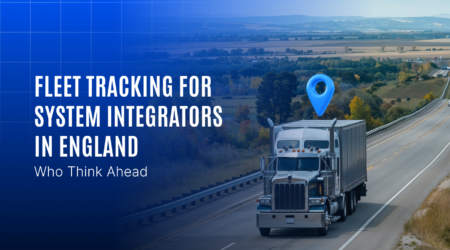How Fleet Inspection Software Drives Public Transport Success

In the ever-evolving landscape of public transport, the key to success lies in the seamless operation of fleets. As cities grow, so does the demand for efficient, reliable, and safe transportation. Fleet management has become a critical component in meeting these demands, and the integration of advanced technologies, particularly fleet inspection software, has proven to be a game-changer. In this blog, we will explore the vital role of fleet inspection software in enhancing public transport and delve into the latest trends in the industry.
Understanding Fleet Inspection Software for Public Transport
1. Safety First: Real-time Monitoring
For public transport, safety is non-negotiable. Fleet inspection software brings real-time monitoring to the forefront. This feature allows transport managers to track the condition of each vehicle in real-time, ensuring that safety standards are upheld throughout the journey. Any anomalies or potential issues are instantly flagged, enabling swift intervention and preventive measures.
2. Proactive Maintenance: The Key to Reliability
Public transport operates on tight schedules, leaving little room for unexpected breakdowns. Fleet inspection software shifts the paradigm from reactive to proactive maintenance. By utilizing predictive maintenance algorithms, the software identifies potential issues before they escalate, minimizing downtime and ensuring that vehicles remain reliable for passengers.
3. Compliance Management: Meeting Regulatory Standards
Public transport vehicles are subject to stringent regulatory standards. Fleet inspection software simplifies compliance management by automating the tracking of inspections, certifications, and adherence to safety regulations. This not only ensures that public transport fleets meet the necessary standards but also reduces the risk of regulatory penalties.
Features Tailored for Public Transport
To cater to the unique demands of public transport, fleet inspection software comes equipped with features that address specific challenges:
1. Route Optimization Integration
Public transport routes can be complex, with multiple stops and varying schedules. Fleet inspection software, when integrated with route optimization tools, ensures that vehicles follow the most efficient routes. This not only reduces travel time but also contributes to fuel efficiency and operational cost savings.
2. Passenger Experience Enhancement
Public transport is about more than just moving from point A to B. Fleet inspection software plays a role in enhancing the passenger experience. By ensuring that vehicles are well-maintained and adhere to safety standards, passengers can have confidence in the reliability and safety of the public transport system.
3. Real-time Communication Channels
In emergencies or unexpected situations, communication is key. Fleet inspection software often includes real-time communication channels that allow drivers to communicate with control centers and passengers. This ensures that timely information is conveyed, fostering transparency and trust in the public transport system.
The Evolution of Fleet Inspection Software
The journey of fleet inspection software in the realm of public transport has been nothing short of transformative. From manual inspections and paperwork to the era of digitalization and real-time monitoring, the evolution of fleet inspection software has reshaped how public transport fleets are managed. In this exploration, we’ll trace the significant milestones in the evolution of fleet inspection software and examine how it has become a linchpin in the efficiency and safety of public transport systems.
Early Challenges: Manual Inspections and Paper Trails
Not too long ago, the inspection of public transport fleets was a laborious process reliant on manual checks and extensive paperwork. Transport managers and technicians had to physically examine each vehicle, document findings on paper forms, and manually track maintenance schedules. This manual approach posed several challenges:
- Time-Consuming Processes: Manual inspections were time-consuming, leading to delays in identifying and addressing maintenance issues.
- Prone to Errors: Paperwork was susceptible to errors, and the sheer volume of documentation increased the likelihood of oversight.
- Limited Accessibility: Data recorded on paper forms was challenging to access, making it difficult for transport managers to have real-time insights.
Transition to Digital Inspections
The turning point in the evolution of fleet inspection software came with the shift to digital inspections. The advent of computers and software applications allowed for the creation of digital checklists and inspection templates. This transition brought several advantages to public transport fleets:
- Increased Efficiency: Digital inspections streamlined the inspection process, reducing the time required to complete checks.
- Accuracy and Consistency: The use of digital forms minimized errors associated with manual documentation, ensuring consistent and accurate records.
- Data Accessibility: Digital records facilitated easier access to inspection data, enabling transport managers to make more informed decisions.
Real-time Monitoring and Predictive Maintenance
As technology continued to advance, the next significant leap in fleet inspection software for public transport came with the introduction of real-time monitoring and predictive maintenance features. This marked a paradigm shift from reactive to proactive maintenance strategies:
- Real-time Monitoring: Fleet inspection software began to integrate with telematics systems, providing real-time insights into the condition and location of each vehicle. This allowed for immediate response to emerging issues.
- Predictive Maintenance Algorithms: The incorporation of predictive maintenance algorithms enabled the software to analyze historical data and predict when specific components were likely to fail. This proactive approach minimized downtime and extended the lifespan of the fleet.
Compliance Management Simplified
Compliance with regulatory standards is a critical aspect of public transport. Fleet inspection software evolved to simplify compliance management, addressing the complexities associated with meeting stringent regulations:
- Automated Tracking: Fleet inspection software automated the tracking of inspections, certifications, and adherence to safety regulations. This ensured that public transport fleets consistently met regulatory standards.
- Reporting Capabilities: Advanced reporting capabilities allowed transport authorities to generate comprehensive reports for regulatory authorities, showcasing compliance with industry standards.
Integration with Advanced Fleet Management Software
In the current landscape, the evolution of fleet inspection software for public transport is marked by seamless integration with advanced fleet management software. This integration expands the capabilities of fleet inspection by providing a holistic view of the entire transport ecosystem:
- Route Optimization Integration: Fleet inspection software now integrates with route optimization tools, ensuring that vehicles follow the most efficient routes. This contributes to fuel efficiency and operational cost savings.
- Passenger Experience Enhancement: The software plays a role in enhancing the passenger experience by ensuring that vehicles are well-maintained and adhere to safety standards. This fosters confidence and trust among passengers.
- Real-time Communication Channels: Communication channels integrated into fleet inspection software facilitate real-time communication between drivers, control centers, and passengers. This is crucial in emergencies or unexpected situations.
Emerging Trends Shaping the Future
The evolution of fleet inspection software for public transport continues, with emerging trends that promise to shape the future of fleet management:
- IoT Integration: The Internet of Things (IoT) is becoming integral, providing enhanced connectivity for real-time monitoring of vehicle health, passenger loads, and environmental conditions.
- Mobile Accessibility: Mobile accessibility is evolving, allowing transport managers to oversee fleet operations on-the-go, providing flexibility in managing public transport systems.
- Data-driven Decision Making: The power of data is being harnessed for more efficient resource allocation and improved overall performance, contributing to data-driven decision-making.
A Future-Ready Public Transport System
The evolution of fleet inspection software for public transport reflects a commitment to efficiency, safety, and innovation. From the manual processes of the past to the real-time monitoring and predictive maintenance capabilities of today, this software has become an indispensable tool for transport authorities.
As we look toward the future, the integration of advanced technologies such as IoT, mobile accessibility, and data-driven decision-making signifies a commitment to building a future-ready public transport system. Fleet inspection software is not just keeping pace with technological advancements; it is leading the way in shaping a transportation infrastructure that is efficient, safe, and responsive to the evolving needs of urban populations. The journey continues, and the future holds exciting possibilities for the continued evolution of fleet inspection software in the realm of public transport.

